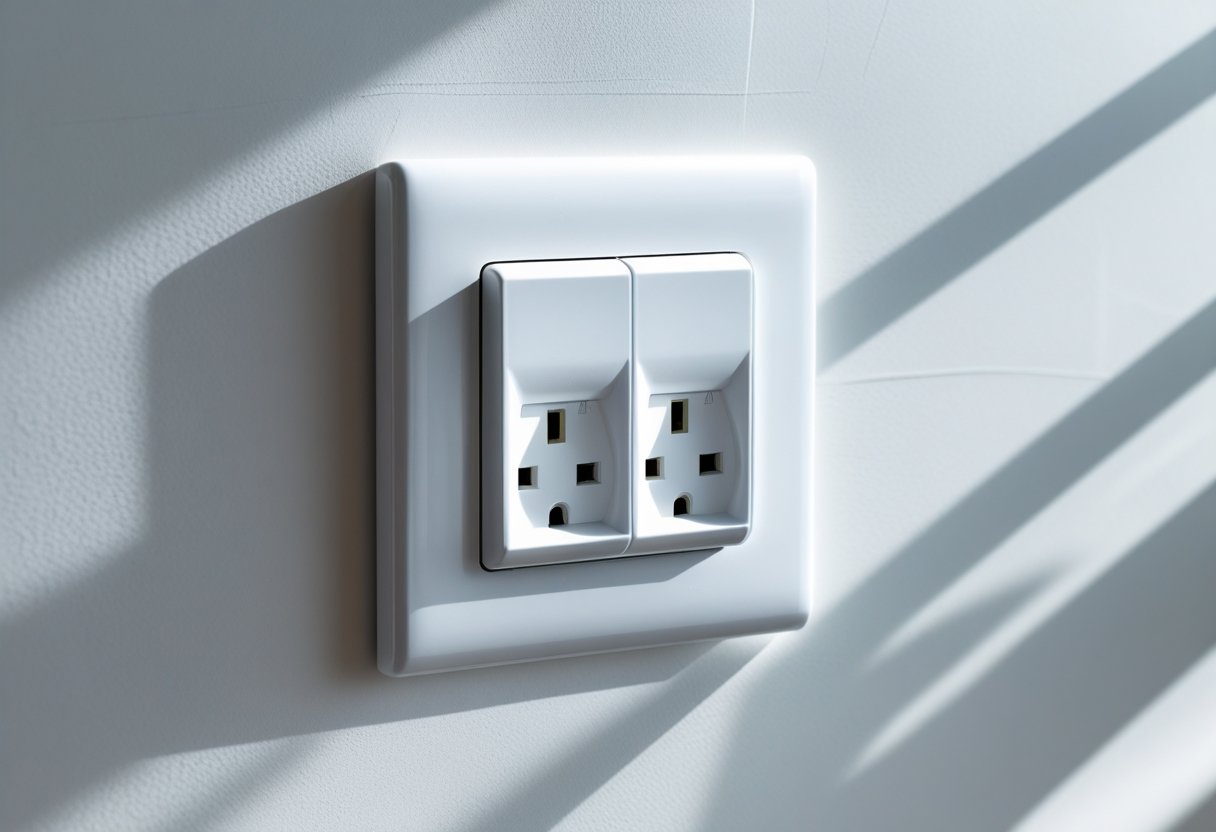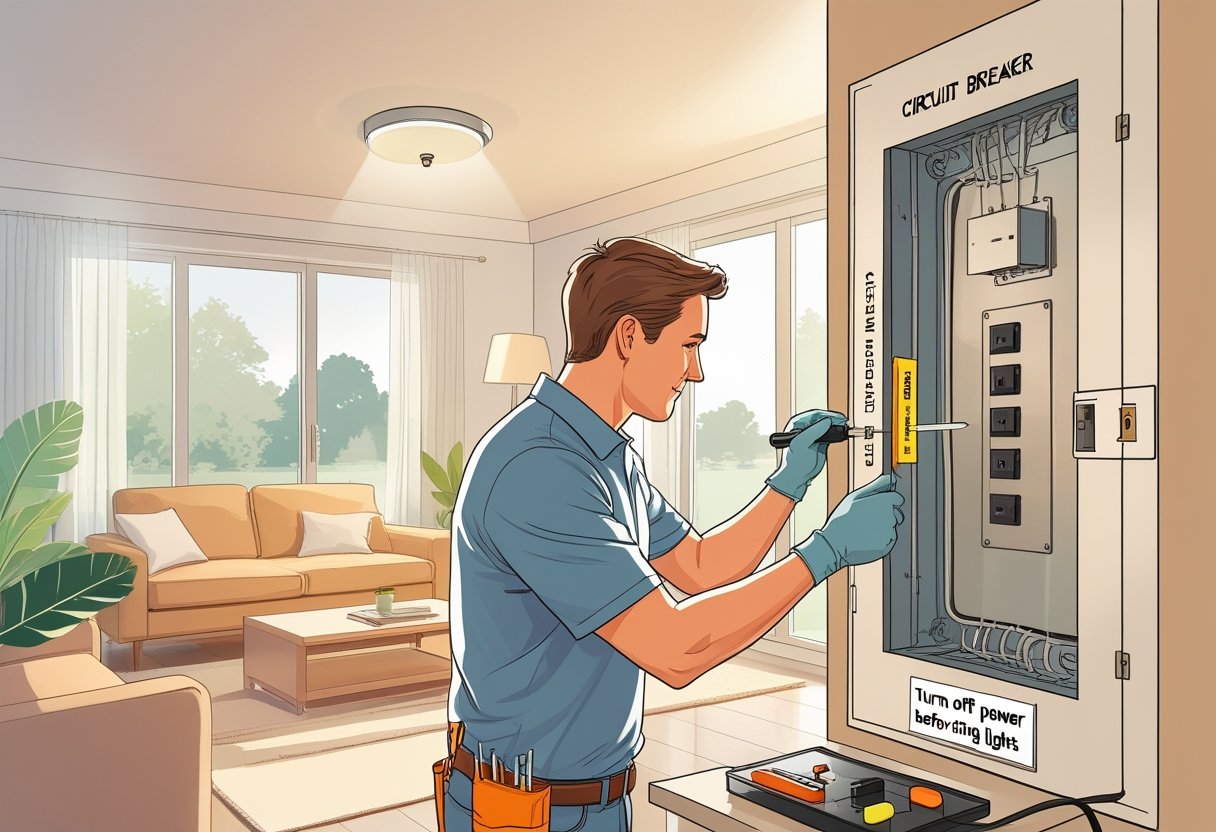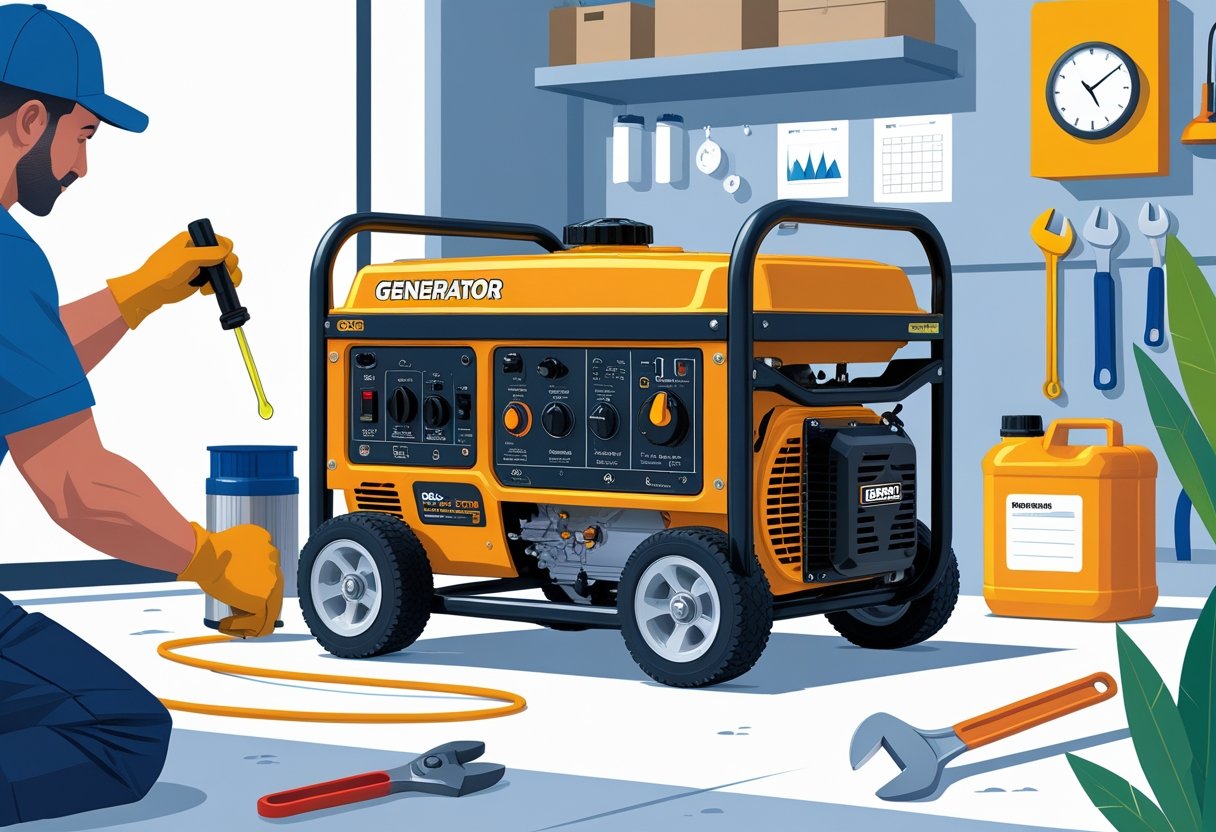When your outlets suddenly stop working, it’s frustrating—maybe even a little concerning. First thing to do? Check your circuit breaker panel. A tripped breaker is often the culprit behind dead outlets. You might also notice flickering lights, buzzing, or appliances that just refuse to start. All of these can point to electrical issues.
Knowing what to look for can save you time and help keep your home safe. At AAA Electrical Services, we’re all about safety-first work by licensed pros, with same-day service and honest, flat-rate pricing. Whether you’re dealing with a quick fix or thinking about a panel upgrade, having help nearby brings a bit more peace of mind in your Sacramento-area home.
Understand Common Causes of Outlet Failure
When outlets quit on you, it’s usually something within your electrical system. Often, it’s not too hard to spot. Common causes? Safety features kicking in, damaged parts, or just loose wires. If you know what to look for, you’ll handle things faster and safer.
Tripped Circuit Breakers
Circuit breakers protect your home from electrical overloads. Too many devices on one circuit? The breaker trips, cutting power to prevent damage or fire.
Take a look at your breaker panel. Are any switches flipped to "off"? Resetting usually brings power back. But if it trips again right away, you’ve probably got a deeper issue like an overloaded circuit or a faulty device.
Don’t keep resetting a tripping breaker. That’s just asking for trouble. Call AAA Electrical Services for same-day help. Their electricians show up ready to fix most problems on the spot.
Blown Fuses
Some older homes use fuses instead of breakers. Fuses melt when the current’s too high, cutting power to protect your wiring.
If a fuse blows, replace it with one of the same rating—no exceptions. Using the wrong fuse is dangerous and can cause a fire.
Always turn off the main power before replacing a fuse. If they keep blowing, you might have wiring issues or too many gadgets on one circuit. Time to get a pro from AAA Electrical Services to check things out.
Loose Wiring
Loose wires in outlets or panels can make outlets stop working. Sometimes it’s from old age, sometimes from bad installation.
A loose wire might make the outlet work now and then, or not at all. You might notice flickering power or even a burning smell—both are red flags.
Don’t try to fix loose wires unless you really know what you’re doing. Call a licensed electrician. It’s not worth the risk.
Faulty Outlets
Outlets don’t last forever. Cracks, broken bits, or internal wear can make them quit. Sometimes you’ll see sparks or get a little shock—time to replace the outlet.
If an outlet feels hot or smells burnt, stop using it right away. That’s a fire hazard, no question.
AAA Electrical Services handles outlet repairs and upgrades, fast. Flat-rate pricing, quick service, and your home’s safety come first.
Initial Safety Precautions
Before touching anything, protect yourself and your home. Simple safety steps go a long way. Make sure the power’s off, use the right gear, and keep things dry.
Turn Off Power at the Breaker
First step: Turn off the power to the circuit with the dead outlet. Head to your breaker panel and find the right switch. Flip it to “off.”
Cutting the power reduces shock risk while you check things out. Not sure which breaker to hit? Turn off the main breaker for the whole house.
Double-check that the power’s off with a voltage tester or by plugging in something you know works. If the breaker trips again when you turn it back on, it’s time for professional help.
Use Proper Tools
Use tools made for electrical work—insulated screwdrivers, voltage testers, that sort of thing. Metal tools without insulation? Skip them; they’re dangerous.
Don’t use knives or regular pliers. Having the right tools makes the job safer and easier. AAA Electrical Services techs always show up with a “warehouse on wheels”—so most fixes happen right away.
Wear gloves if you’ve got them, and stand on something dry and non-conductive, like a rubber mat.
Avoid Wet Conditions
Never work on outlets or panels if your hands are wet or the area’s damp. Water conducts electricity and boosts your shock risk.
If you see moisture near the outlet or panel, wait until it’s dry. Suspect water damage? Call a pro.
Keep kids and pets away while you work. If you’re in Sacramento, AAA Electrical Services does same-day service with licensed pros who put safety first.
Troubleshoot Individual Outlets
When an outlet dies, knowing where to look saves you time and keeps things safe. Test the outlet, check for visible damage, and see if nearby outlets are affected. These quick checks can help you zero in on the problem before calling in backup.
Test Outlet With Another Device
Plug in something you know works—a lamp, a phone charger, whatever. If it doesn’t turn on, try that device in a different outlet.
If it works elsewhere but not in the suspect outlet, you’ve likely found the problem. If nothing works in the outlet, you could be looking at a wiring or breaker issue.
Testing with a known-good device is a fast way to figure out if the outlet’s at fault.
Inspect for Visible Damage
Look closely at the outlet. See any cracks, discoloration, or burn marks? Those are signs of overheating or worn parts.
Take a sniff, too. A burning smell is serious—don’t use that outlet.
Find damage? Don’t touch the outlet until a licensed electrician checks it out. Damaged outlets can shock you or start a fire.
Check for GFCI Resets
In kitchens, bathrooms, or garages, outlets may be tied to a GFCI (Ground Fault Circuit Interrupter). These have a reset button.
If your outlet’s dead, look for a nearby GFCI and press reset. Sometimes one tripped GFCI will knock out a bunch of outlets.
If resetting works, great. Test the outlet again. If not, something deeper is going on.
Examine Nearby Outlets
Outlets often run in a series. If one fails, it can take others with it. Check the outlets near the dead one.
Test them with a device, and look for damage or tripped GFCI buttons.
If several outlets are out, check the breaker panel. A tripped breaker might be the cause.
Still stumped after checking breakers and resets? Time to call a pro. AAA Electrical Services does same-day repairs to keep your home safe.
Check Circuit Breaker Panel
A tripped circuit breaker is a classic reason for dead outlets. The breaker panel is your home’s electrical hub. Checking it can reveal problems and sometimes get your outlets working again fast.
Identify Tripped Breakers
Look for breaker switches that aren’t lined up with the rest. A tripped breaker usually sits in the middle or is just a bit off from “on.” Sometimes it even feels a little loose.
Crowded panel? Use a flashlight if you need to. Each breaker controls different parts of your house, so figure out which one runs your dead outlets.
If a breaker keeps tripping, it could mean a bigger problem. That’s a good time to call a licensed electrician like AAA Electrical Services.
Reset the Breaker
To reset a breaker, turn it all the way to “off.” Then flip it back to “on.” You should hear or feel a click.
Check your outlets again. If they’re back, it was probably just a minor overload. Try not to overload that circuit again.
If the breaker trips right away, don’t keep flipping it. You might have a wiring problem or a bad breaker that needs a pro.
Label Problematic Circuits
Once you know which breaker controls the dead outlets, label it. Use a marker or labels to mark each switch with the rooms or areas they cover.
Good labeling saves time later. You’ll know exactly where to look next time. Keeping the panel organized just makes life easier.
AAA Electrical Services can label panels and do upgrades, too. A clearly marked panel makes repairs faster and less confusing, for you or any electrician.
Test and Replace Suspect Outlets
When outlets stop working, checking each one helps you find the trouble spot. Use simple tools to test, swap with a working outlet, and replace any that look damaged. It’s all about keeping your home safe and your outlets reliable.
Use an Outlet Tester
An outlet tester is a handy little tool. Plug it in, and the lights tell you if the wiring’s right or if there’s a problem—like an open ground or reversed wires.
If the tester shows a problem, don’t use the outlet until it’s fixed. Outlet testers are cheap and easy to find at hardware stores. They can help you avoid hidden dangers.
Swap With a Known Working Outlet
If the tester shows no issues but the outlet still won’t work, try swapping it with one you know is good. Always turn off the power at the breaker first, then carefully remove the outlet cover and pull out the outlet.
Switch the outlets and see if the problem follows. If the new outlet works, the old one was bad. If the problem stays, it’s probably the wiring or circuit—let a pro handle that.
Replace Damaged Outlets
Any outlet that’s cracked, burned, or loose should be replaced right away. That kind of damage can shock you or cause a fire. Always shut off power before you start any repairs.
Not comfortable doing it yourself? Call AAA Electrical Services. Their licensed techs show up ready to fix things the same day. They focus on safety, fair pricing, and leaving your home tidy. Swapping out bad outlets quickly keeps your home safe and gives you peace of mind.
Evaluate Electrical System Issues
When outlets go out, it’s smart to check the bigger picture. Look for signs of overloads, keep track of how often outages happen, and think about how old your wiring is. Sometimes, that’s what it takes to uncover the real problem and keep your home protected.
Detect Overloaded Circuits
An overloaded circuit happens when too many devices draw power from the same outlet or breaker. You might notice outlets stop working or your circuit breaker trips if you plug in too much at once. If your outlets shut off when several things are running, that's a classic overload sign.
Listen for buzzing or feel for warm outlet covers—those are red flags that too much electricity is flowing through. It's a good idea not to plug in high-power stuff like heaters or AC units all on one circuit.
Try unplugging a few things and see if the outlet comes back to life. If this keeps happening, it’s time to call AAA Electrical Services. Their vans come stocked, so they often fix overload problems in a single visit, which is a relief when you just want things safe and working.
Look for Repeated Outages
If your outlets turn off again and again, you might have a deeper electrical issue. Frequent outages usually point to a failing breaker or faulty wiring.
Keep track of how often outages happen and which outlets go out. That info helps your electrician figure things out faster. Over time, repeated trips can mess with your electrical panel or wiring, and that's a fire risk.
If outages mostly happen when you’re using a lot of power, overloaded circuits could be the culprit. If they seem random, you really should get a professional inspection. AAA Electrical Services does same-day service in Sacramento and nearby spots if you need someone out fast.
Assess Age of Wiring
Old or outdated wiring is a common reason outlets fail or act up. Wiring from before modern codes can be unsafe and damage-prone.
Check for cracked insulation, exposed wires, or outlets that feel loose or warm. If your home’s over 30 years old, it’s smart to have the wiring inspected by someone licensed.
Upgrading old wiring makes your home safer and lets you use today’s appliances without weird issues. Plus, you’ll avoid frequent outages and overloads.
If you haven’t had your wiring checked in a while, give AAA Electrical Services a call. Their licensed techs focus on safety and protecting your home and family.
Know When to Call a Professional
When outlets stop working, sometimes you can fix it yourself. But some problems really do call for an electrician. Knowing when to call in an expert can save you from bigger headaches and keep your family safe.
Persistent Problems
If you reset the breaker or swap out a fuse but your outlets still won’t work, that’s not a problem that’ll fix itself. Breakers that trip often or outlets that only work sometimes usually mean a wiring issue or maybe a bad device hidden in the wall.
Trying to tackle these on your own can be risky. A licensed electrician has the right tools and experience to find the real problem—bad wiring, busted breakers, or something else lurking back there. AAA Electrical Services offers same-day help with stocked vans, so they can often get you sorted out quickly and safely.
Signs of Electrical Hazards
Some warning signs mean you should call a professional right away. Burning smells, sparks, flickering lights, or buzzing sounds coming from outlets? That’s serious. Damaged covers or discoloration around sockets are also big red flags.
These problems can spark fires or cause shocks if you ignore them. Certified electricians know how to check and fix these hazards to keep your family safe. Don’t wait or try to patch it yourself—safety-first electrical work is always the way to go.
Home Insurance Requirements
A lot of home insurance policies require electrical repairs to be done by a licensed electrician. If you try to fix something complicated yourself, your policy might not cover any damage from faulty work.
Calling a pro also gives you proof that your wiring meets local codes, which can make insurance claims way easier if there’s ever a problem. It just makes sense to call a company you trust, like AAA Electrical Services, for licensed and insured repairs that keep you covered.
Prevent Future Outlet Problems
Taking a few steps now can keep your outlets working and help you avoid shocks or fires. Regular checks, watching your power use, and upgrading old outlets all help keep your home and family safe.
Schedule Routine Inspections
Regular inspections catch outlet problems before they get out of hand. Watch for discoloration, sparks, buzzing, or warmth—these signs usually mean wiring trouble or an overload.
Have a licensed electrician check your outlets every year or two. Pros like AAA Electrical Services spot hidden dangers most folks would miss. Routine checks keep little problems from turning into expensive repairs and make your electrical system more reliable.
This is especially important if your house is older or you run a ton of appliances. Jot down anything odd and get it looked at sooner rather than later.
Avoid Overloading Circuits
Plugging in too many things can overload a circuit and make outlets stop working or breakers trip. Each circuit has a limit—usually 15 or 20 amps.
To prevent overloads, spread out heavy appliances like microwaves, heaters, or ACs across different circuits. Try not to stack power strips or extension cords in one spot.
Keep a mental note of which devices use the most power and check your breaker box if things trip a lot. Being smart about what you plug in protects your outlets and your home.
Upgrade Outdated Outlets
Old or busted outlets cause all sorts of problems and can be dangerous. If you see cracks, loose plugs, or smell burning, it’s time for a change.
Upgrading adds safety features like tamper resistance or GFCIs, which help prevent shocks—especially in kitchens and bathrooms.
Let a licensed electrician handle outlet upgrades. AAA Electrical Services techs usually fix outlets the same day since their vans are stocked. New outlets mean fewer worries for years to come.
Frequently Asked Questions
When outlets quit on you, the cause might be simple or a bit more involved. Sometimes it’s just one outlet, other times it’s several. Knowing what to check first can save time and keep things safe.
What should I do if my outlet suddenly stops working but the circuit breaker hasn't tripped?
First, unplug anything from the outlet and try it in another spot to see if the device itself is the issue.
Give the outlet a look—if it’s loose or damaged, you’ve found your culprit. If it looks fine, try resetting any nearby GFCI outlets, since they sometimes control more than one outlet.
If all that checks out but the outlet’s still dead, it’s time to call a pro like AAA Electrical Services for a safe inspection.
How can I troubleshoot multiple dead outlets in my home when the lights are still on?
If several outlets are out but the lights work, they probably share a circuit with one breaker or GFCI.
Look for a tripped breaker or a GFCI that needs a reset. Lights and outlets often run on different circuits.
Test your breakers and reset any that are off. If nothing changes, call a licensed electrician to dig deeper.
What are the steps to fix an outlet that has power but isn't working?
If the outlet has power but nothing works when you plug in, you might have a loose or damaged connection inside.
Turn off the breaker before you do anything. Remove the outlet cover and check for loose wires—tighten them if you find any.
If you’re not sure what you’re looking at, let a pro from AAA Electrical Services handle it. Better safe than sorry.
How do you reset a GFCI outlet and what are the signs it might be the issue?
To reset a GFCI, press the "Reset" button between the sockets.
Signs it’s the problem? Dead outlets nearby, especially in kitchens, bathrooms, or outside. Sometimes the GFCI trips for no clear reason.
If it keeps tripping, you could have a real electrical fault that needs an expert.
What could be causing my bathroom outlets to fail while the lights are functioning?
Bathroom outlets usually run through GFCI protection. If the GFCI trips, you’ll lose power to outlets but the lights—on a different circuit—will keep working.
Moisture or a ground fault often triggers this. Try resetting the GFCI and dry the area. If the outlets keep failing, call a licensed tech to check for hidden hazards.
Is there a way to revive all dead outlets in my home without calling a professional?
You could start by resetting your circuit breakers and pressing the reset buttons on all GFCI outlets. It’s worth grabbing a basic outlet tester too—just to see if there’s power or maybe a wiring hiccup.
But if nothing changes, or you catch a weird burning smell, flickering lights, or breakers tripping over and over, honestly, it’s probably time to call a licensed electrician.
AAA Electrical Services does same-day calls, and their vans usually have what they need to fix most stuff on the spot. That’s one less thing to worry about, right?





